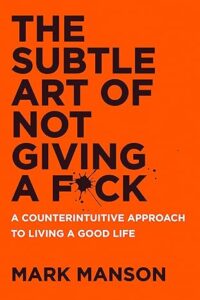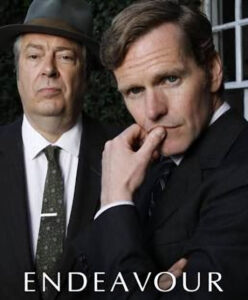 I stumbled across the subject of The Backwards Law by accident—a happy accident that led me to The Subtle Art of Not Giving a F*ck. Excellent book that I devoured in two sittings.
I stumbled across the subject of The Backwards Law by accident—a happy accident that led me to The Subtle Art of Not Giving a F*ck. Excellent book that I devoured in two sittings.
The Backwards Law proposes the more we pursue something, the less satisfied we become. For writers, the constant pursuit of “more” causes us to feel horrible about where we are and what we’ve achieved. The harder we try, the less likely we are to succeed.
On the surface, it seems like the opposite of perseverance, doesn’t it? But it’s not. The Backwards Law goes much deeper than that.
Think of it this way:
- Trying too hard to be creative or write something brilliant often leads to writer’s block, self-doubt, and a feeling of being disconnected from the work.
- Only focusing on the end result—recognition, success, publication—causes unnecessary anxiety and pressure.
- The fear of making mistakes or writing poorly will paralyze a writer and often will lead to abandoning the WIP.
“Wanting a positive experience is a negative experience; accepting a negative experience is a positive experience.” Mark Manson – The Subtle Art of Not Giving a F*ck.
Alan Watts, the philosopher who coined the phrase, describes The Backwards Law as being in a lake. If you relax and put your head back, you’ll float. But the more you struggle and flail to try to stay afloat, the more you will sink.
Often our search for “more” has the opposite effect. It shines a spotlight on what we lack.
Life Examples
- The more we cling to a loved one, the more they will feel suffocated and in need of space.
- The more we obsess about accumulating money, the more poor and unworthy we will feel.
- The more we pursue trying to feel happier all the time, the more we will reinforce this idea that we are fundamentally lacking and irreparable.
Do you even know what you want?
Sure, selling millions of copies of your book sounds great, but is that why you wrote it? Or maybe, you can’t define what you’re chasing. You just want more.
“Two reasons that you don’t really know what you want. Number one: you have it. Number two: you don’t know yourself, because you never can. The Godhead is never an object of its own knowledge, just as a knife doesn’t cut itself, fire doesn’t burn itself, light doesn’t illuminate itself.” ~ Alan Watts
In The Subtle Art of Not Giving a F*ck, Mark Manson tells the story of a talented young guitarist who was kicked out of his band in 1983, after they had just been signed by a record label. No warning. No reason given. No discussion. They woke him up and handed him a bus ticket.
After much self-pity on the ride home to LA, the guitarist vowed to start a new group that would be so successful, his old band would seethe with jealously. And so, with only that thought in mind, he worked tirelessly to find the best musicians. He wrote dozens of songs. Practiced day and night. Revenge became his muse.
Within two years, a record label signed his new band. One year later, their first record went gold. The guitarist’s name? Dave Mustaine, lead guitarist in the heavy metal band Megadeath, which went on to sell over 25 million albums and tour the world many times. Mustaine is considered one of the most influential musicians in the history of heavy metal music.
Sounds like the story has a happy ending, right?
Not quite.
The band who kicked him out was Metallica, which has sold over 180 million albums worldwide and is considered by many to be one of the greatest rock bands of all time.
Because of Metallica’s fame, Mustaine considered himself a failure. Despite all he’d accomplished, in his mind, he would always be the guy who got kicked out of Metallica and nothing more. Whether he realized it or not, Mustaine used Metallica’s success and popularity as his life-defining measuring stick. Even after all of Megadeath’s success, he could never be happy, because he based his self-worth and music career on something he had no control over.
This story perfectly illustrates The Backwards Law in action.
Accept imperfection and you’ll feel perfect. Accept loneliness and you’ll feel content alone. Accepting a negative experience is a positive experience. But fighting a negative experience means you’ll suffer twice.
- When we stop trying to be happy, we’ll be happy because there’s nothing we need beyond what is.
- When we stop trying to be rich or massively successful, we’ll live in abundance because we’re content with what we have and anything on top of that is a bonus.
Thus, the only way to have what we want is not to want it. And that’s what The Backwards Law teaches us.
Being aware of the workings of The Backwards Law doesn’t mean that we should never set goals, never have ambitions, or never chase our dreams. Rather, The Backwards Law teaches us not to be fooled by the idea that the pursuit of happiness (whatever that looks like to you) leads to happiness. When in fact, the opposite is true. And with that knowledge, we’re able to enter the blissful state of enjoying the journey.
“The mystery of life is not a problem to be solved but a reality to be experienced.” ~ Alan Watts
How do we get what we want without trying?
Depends on what we want. If we strive to write the best damn book we can, the following tips should help.
Mindful Writing: Practice mindfulness while writing. It’ll help you become more aware of your thoughts and feelings without judgment, allowing you to be more present in the moment.
Step Away: It’s okay to step away from the WIP to clear your head. Go for a walk. Take a shower. Read a book. Exercise. I do this all the time when I’m working out a plot issue. Nine times out of ten, the answer reveals itself as soon as I stop thinking about it.
Accept Imperfection: Give yourself permission to make mistakes in early drafts. It’ll allow you to experiment and explore different ideas without fear.
Stay Present: Enjoy the journey of bringing your idea to life. Have fun with your characters. Revel in that perfect sentence or paragraph you wrote yesterday, then continue on.
The Backwards Law for writers is about shifting from a place of striving and pressure to a place of flow and acceptance.
By letting go of the need to control the outcome and embrace the process, we’ll unlock creativity and produce more authentic and fulfilling work.
Have you heard of The Backwards Law? It’s as true for writing as it is for life.











 The things we tell ourselves we become. It’s not easy to silence the inner critic, but it’s a crucial step in every writer’s life.
The things we tell ourselves we become. It’s not easy to silence the inner critic, but it’s a crucial step in every writer’s life. A friend told me a millennial at work couldn’t understand the clock on the wall. I’ve heard many stories involving rotary phones and cursive writing, but the clock surprised me.
A friend told me a millennial at work couldn’t understand the clock on the wall. I’ve heard many stories involving rotary phones and cursive writing, but the clock surprised me.
 Every character is the hero of their own story. Even the villain.
Every character is the hero of their own story. Even the villain.





